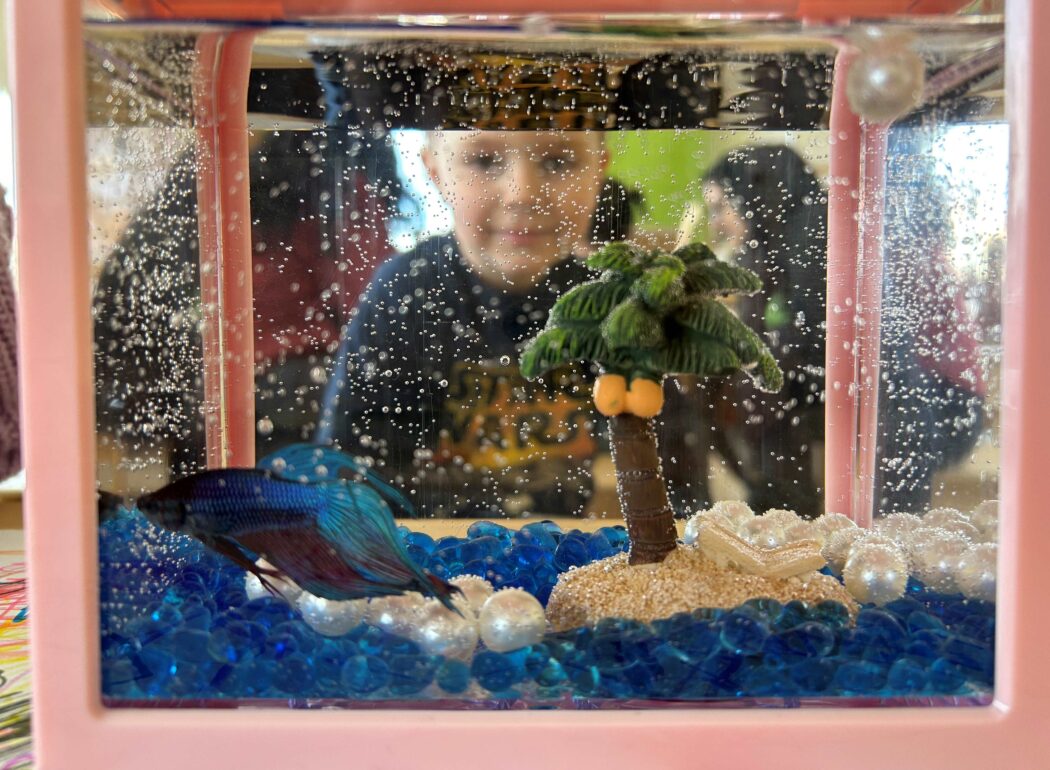In the lively world of daycare centers, where laughter fills the air and curiosity knows no bounds, there’s a quiet corner that holds a special secret: a tank filled with aquatic life. While it may seem like just another decoration, the presence of pet fish in daycare settings holds profound educational and developmental benefits for young children. Let’s explore the wonders of why introducing pet fish into daycare environments goes far beyond mere aesthetics.
1. Sensory Exploration:
For young children, interacting with pet fish offers a multisensory experience unlike any other. From watching the fish glide through the water to listening to the gentle sound of bubbles, children engage their senses in observing and appreciating the aquatic environment. The vibrant colors of the fish and the textures of the tank decorations provide rich stimuli for sensory exploration, promoting cognitive development and sensory integration.
2. Responsibility and Caregiving:
Caring for pet fish instills a sense of responsibility and empathy in young children. Even the simplest tasks, such as feeding the fish or helping to clean the tank, teach children the importance of caring for living creatures. Through these interactions, children learn to be nurturing and compassionate, laying the foundation for positive social development and relationships with others.
3. Calmness and Emotional Regulation:
The tranquil presence of fish has a soothing effect that can help children regulate their emotions and reduce stress. Watching fish swim serenely can provide a sense of calmness and relaxation, particularly during moments of heightened emotions or transitions. The aquarium becomes a safe space where children can retreat to find comfort and solace, fostering emotional well-being and resilience.
4. Curiosity and Learning:
Pet fish serve as fascinating subjects for exploration and inquiry-based learning. Children naturally gravitate towards observing the behaviors and movements of the fish, sparking curiosity and prompting questions. Teachers can leverage this curiosity to facilitate discussions about aquatic life, habitats, and environmental conservation. Through hands-on experiences, children develop a deeper understanding of the natural world and their place within it.
5. Language Development:
The presence of pet fish provides abundant opportunities for language development and communication. Children may engage in conversations with peers and caregivers about the fish, describing their observations and sharing stories. Teachers can introduce vocabulary related to fish anatomy, colors, and behaviors, enriching children’s language skills. Additionally, storytelling and imaginative play inspired by the fish can enhance narrative abilities and creativity.
6. Social Interaction and Cooperation:
Watching fish together becomes a shared experience that promotes social interaction and cooperation among children. Whether they’re taking turns feeding the fish or collaborating on designing the tank decor, children learn important social skills such as sharing, cooperation, and empathy. The aquarium becomes a focal point for group activities and collaboration, fostering a sense of belonging and community within the daycare environment.
In conclusion, the humble aquarium in a daycare setting holds tremendous educational and developmental value for young children. Through sensory exploration, responsibility, emotional regulation, learning, language development, and social interaction, pet fish enrich the lives of children in ways that extend far beyond the confines of their watery habitat. So, the next time you visit a daycare center, take a moment to appreciate the profound impact of those tiny fins swimming gracefully in their aquatic world.





